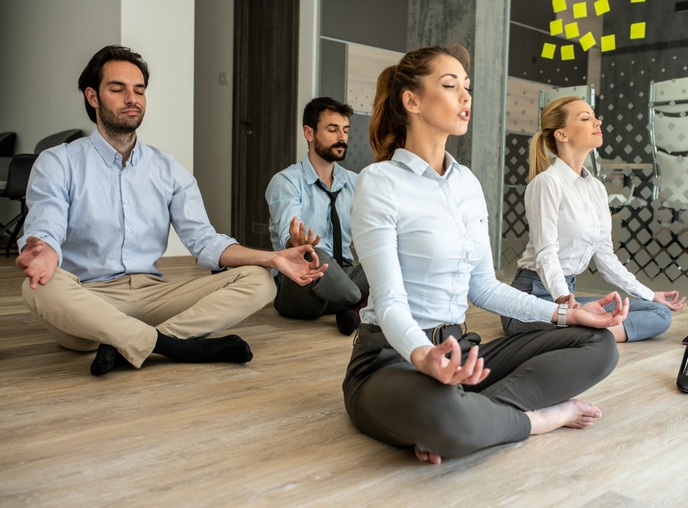I would describe myself as a daily meditator. But I don’t sit for meditation every day. Does that make me a liar?
First, I think we need a definition of meditation. A simple, useful one is this: Meditation is paying attention, on purpose, in a non-judgmental way.
But in all the pictures, meditators sit perfectly still on a mountaintop. True. But let’s leave the mountaintop for a moment and go for a run…
It’s early morning. You slip on your runners and leave the house. You notice the first rays of sunlight peeking through the clouds. You turn into a park and cut across the grass, feeling the slight give of damp earth. You hear the “slap, slap” as your feet hit the ground. In the cool morning air, you see your breath. Inside you can feel a spreading warmth as you run uphill. You pass a city playground and notice leaves fluttering in the trees and hear the sing-song of children’s voices.
You are in tune with your body and surroundings. Are you meditating?
I used to run competitively, and it demands a relentless drive to improve. But I know lots of people who sit for meditation the way a competitive runner trains. They track their “longest sits.” They will endure intense discomfort to clock a few extra minutes of stillness. They compare themselves with other meditators. They might sit still like the monk on the mountaintop. But are they meditating?
I’ve taught movement and meditation for over 20 years, and I don’t think the magical part of meditation is sitting. The magic is in the way you build a habit of paying attention to yourself and the world around you in an open, curious way.
Meditating is one of our foundational Service Habits. But so many of our clients admit that it’s the habit they struggle with the most. And sitting still is one of the barriers. Maybe this is true for you too?
If so, mix things up by meditating in motion. Here are a few tips to get started:
- Try a rhythmic activity like running, walking, or tai chi. The key is to make it something you enjoy so you’ll do it regularly.
- As you move, play with shifting your awareness from your “inner” world to your “outer” world. Take in sights, sounds, or smells around you like light through a window, birdsong, the smell of coffee, or the soft carpet under your feet. Then notice the flow of your breath, the beat of your heart, or any other physical sensation.
- If your mind gets stuck on something, notice the feeling of stuck-ness. Does it have a sensation like tightness in your stomach or weight in your shoulders?
- Be curious about all the ways you can use your senses and all the things you can feel.
Meditation expert Jon Kabat-Zinn reminds us, “Mindfulness has to do with…cultivating appreciation for the fullness of each moment we are alive…because paying attention in this way opens channels to deep reservoirs of creativity, intelligence, imagination, clarity, determination, choice, and wisdom within us.”
Written by Jennifer Crescenzo, ServiceQ Facilitator.
Jennifer’s facilitation style blends modern movement science, neuroscience, and principles from yoga and tai chi to help people enjoy better health, manage stress, and do what they love with more passion and purpose.
Sign up to receive new content
